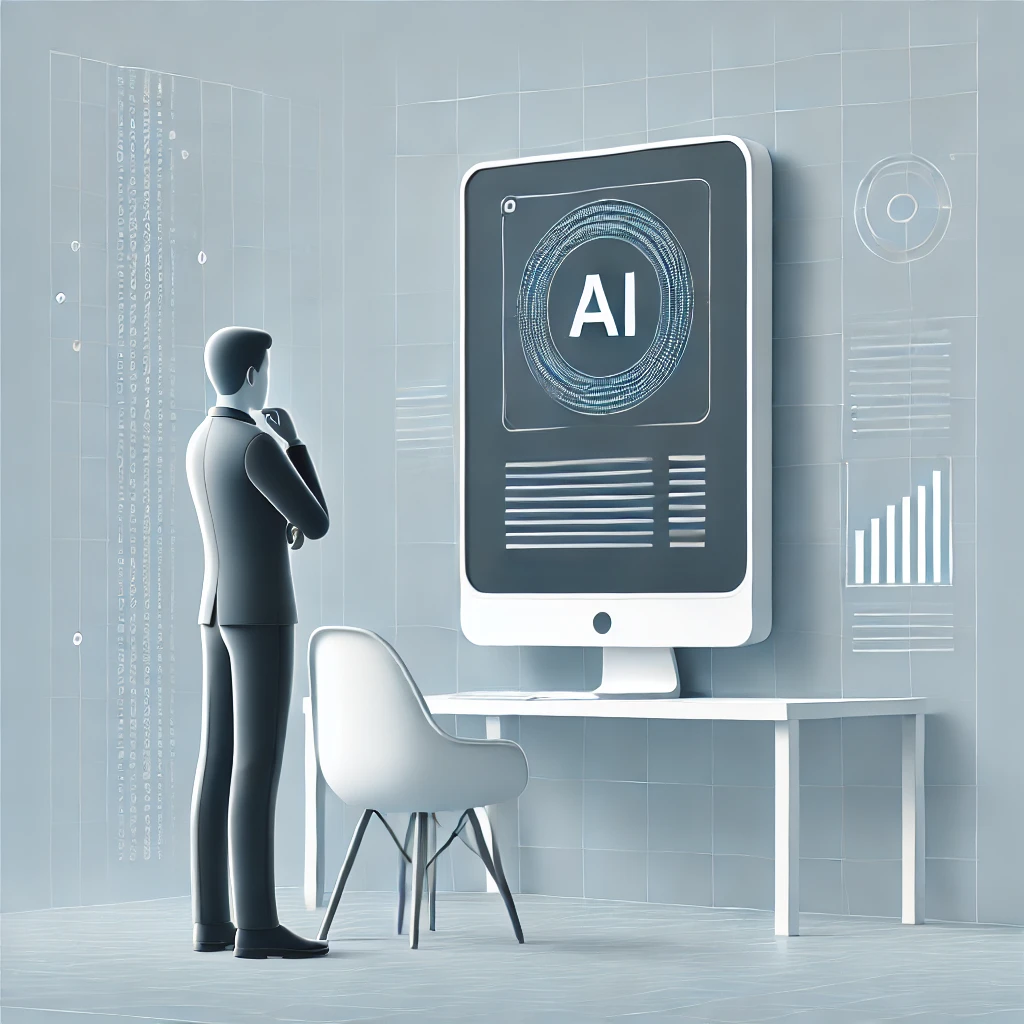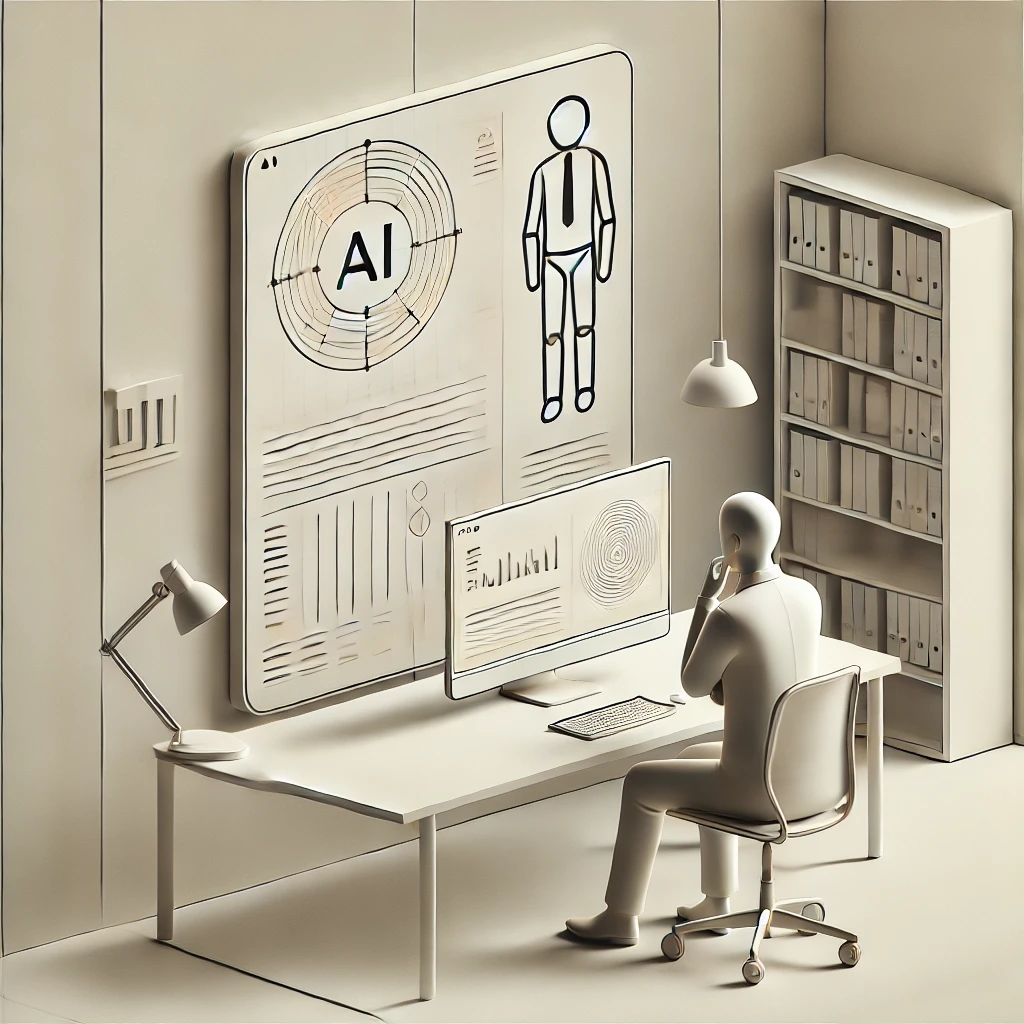AI: The Buzzword We Can’t Escape

AI is everywhere these days—popping up in our news feeds, automating our homes, and even helping us pick movies to watch on a Friday night. It’s also creeping into the workplace, taking on tasks that once required a human touch. But here’s the thing: while AI is undoubtedly powerful, it’s not a magical solution to every problem. And if you’re thinking about using AI to solve all your workplace challenges, you might want to pump the brakes for a second.
Let’s dive into how AI really works, what it’s great at, where it falls short, and why you should think twice before handing over the keys to your talent selection process (or any other complex decision) to an algorithm.
How AI Works: Fast Brain, Meet Super Fast Algorithm
AI, at its core, is a lot like the “fast brain” Daniel Kahneman talks about in his book Thinking, Fast and Slow. This “fast brain” is great at making snap decisions based on the information right in front of it — what psychologists call “What You See Is All There Is” (WYSIATI). AI operates similarly, processing vast amounts of data quickly and efficiently to make predictions or decisions based on patterns it detects.
But, just like our fast brain, AI is limited by the data it’s given. It doesn’t “think” the way humans do; it doesn’t ponder, reflect, or question its assumptions. It just sees what it sees, processes it, and gives you an answer based on that.
Further Reading: Daniel Kahneman’s Thinking, Fast and Slow for an in-depth look at the psychology behind fast and slow thinking.
What AI Is Great At: Repetitive Tasks, Pattern Recognition, and Data Analysis
-
Repetitive Tasks: AI shines when it comes to doing the same thing over and over again without getting bored or tired. Think of it as your digital assistant that never needs a coffee break. It’s great for tasks like sorting emails, automating data entry, or processing invoices. According to a report by McKinsey & Company, AI-driven automation can reduce costs and increase efficiency across various industries.
-
Pattern Recognition: Whether it’s identifying trends in sales data, recognising faces in photos, or even predicting which products will fly off the shelves, AI excels at spotting patterns in large datasets. This capability is highlighted in a study by the Harvard Business Review, which notes that AI’s ability to analyse patterns is revolutionising industries from finance to healthcare.
-
Data Analysis: AI can crunch numbers faster than any human ever could. It can analyse mountains of data and present findings that would take a human analyst weeks to compile. This makes it ideal for tasks like financial forecasting, fraud detection, and market analysis. Deloitte outlines how AI is transforming data analysis and decision-making processes across various sectors.
What AI Isn’t So Great At: Understanding Nuance, Creativity, and Human Potential

-
Understanding Nuance: AI doesn’t do nuance well. It can analyse what’s there but struggles with what’s not immediately apparent. For example, it can rate a job candidate based on their resume and qualifications, but it won’t see the potential in someone who’s a bit outside the box — unless, of course, someone explicitly tells it to look for those traits. This limitation is discussed in an article by UNESCO.
-
Creativity: AI is fantastic at generating content based on existing patterns, but creativity—the ability to come up with something truly original or outside the norm—isn’t its strong suit. It can remix, but it can’t invent. According to Fast Company, while AI can assist in the creative process, it lacks the human touch that drives true innovation.
-
Human Potential: When it comes to hiring, AI can match candidates to a job description and historical hiring patterns like a pro, but it might miss the human potential or other factors that a seasoned recruiter might spot. For instance, AI might pass over a candidate who doesn’t have the perfect resume but has the drive, adaptability, and potential to excel in a role. It’s not that AI can’t assess potential — it’s just that it needs to be very specifically trained to do so, which is often more complex and nuanced than most users realise. Forbes discusses the challenges and limitations of using AI in recruitment, citing the example of Amazon, where the AI picked up ingrained biases from the dataset provide. This led to a propensity to favour male candidates for technical roles.
The Big Considerations: Bias, Complexity, and Priming Your AI
Bias: Mirror, Mirror on the Algorithm
AI can be a double-edged sword when it comes to bias. On one hand, it can help eliminate certain human biases (like unconscious preferences). On the other hand, AI can also replicate and even amplify existing biases if the data it’s trained on is biased. This is where that “fast brain” thinking can get dangerous. If an AI is trained on historical hiring data, for example, it might learn to prefer candidates who fit a certain profile - because that’s what the data shows has been successful in the past. But this doesn’t account for the need to diversify or adapt to changing times.
Pro Tip: Always be mindful of the data you feed your AI. The old saying “garbage in, garbage out” is especially true here. If your data is biased, your AI will be too. Brookings Institution offers insights on detecting and mitigating AI bias.
Complexity: The More Complex the Decision, the More Priming AI Needs
AI is at its best when the task is clear-cut and the criteria are well-defined. But as the complexity of the decision increases, so does the need for careful priming. For example, if you’re using AI to help with recruitment, you’ll need to be very specific about what traits and qualifications the AI should prioritise, as well as consider what might get screened out in the process (and how you might mitigate that). The more nuanced the role, the more challenging it becomes to train the AI effectively.
Pro Tip: For complex decisions, consider using AI as an assistant rather than the decision-maker. Use it to gather data, identify trends, and present options, but leave the final call to a human who can consider the broader context. Harvard Business Review provides a guide on effectively integrating AI into complex decision-making processes, or read this article by UNSW that suggests three steps for harnessing AI in decision making.
Priming Your AI: The Art of the Setup
The success of an AI-driven task largely depends on how well you prime it. This means setting it up with the right data, training it on relevant examples, and continually refining its algorithms based on feedback. It’s not a “set-and-forget” situation. AI requires ongoing attention to ensure it’s delivering the results you need.
Pro Tip: Invest time in understanding how AI works and how to best set it up for the tasks at hand. The more you understand about what’s going on under the hood, the better equipped you’ll be to leverage AI effectively. OpenAI’s blog offers in-depth articles on AI training and best practices.
Conclusion: AI Is Awesome—But It’s Not a Magic Wand
AI is an incredibly powerful tool, but it’s not a one-size-fits-all solution. It’s great for repetitive tasks, pattern recognition, and data analysis, but struggles with creativity, nuance, and understanding human potential. The key to using AI effectively is knowing its strengths, recognising its limitations, and being mindful of how you’re setting it up.
So, before you hand over your hiring process (or any other complex task) to AI, take a moment to consider what you’re asking it to do, and whether a human touch might still be necessary. After all, AI is here to augment our capabilities, not replace them.